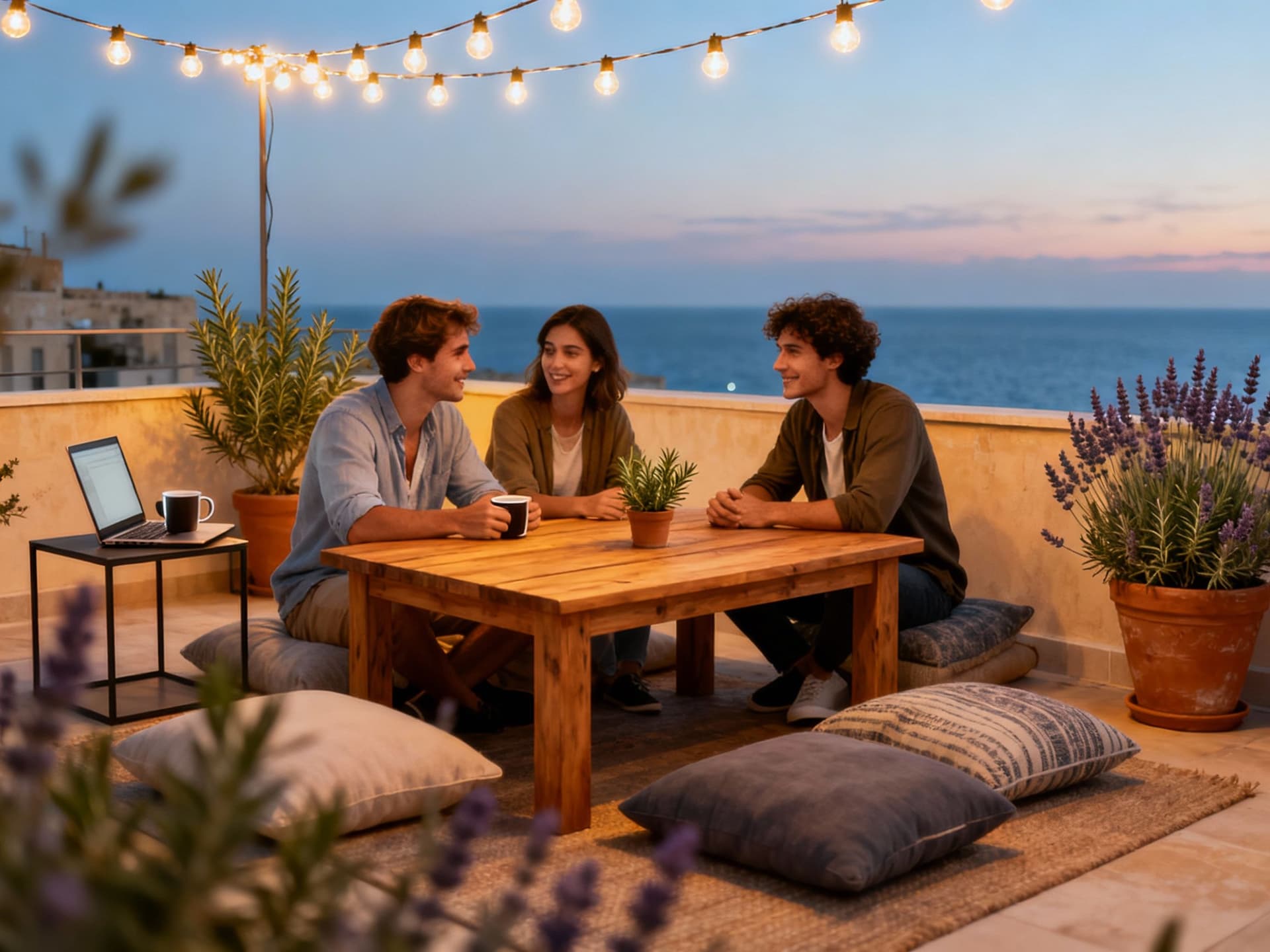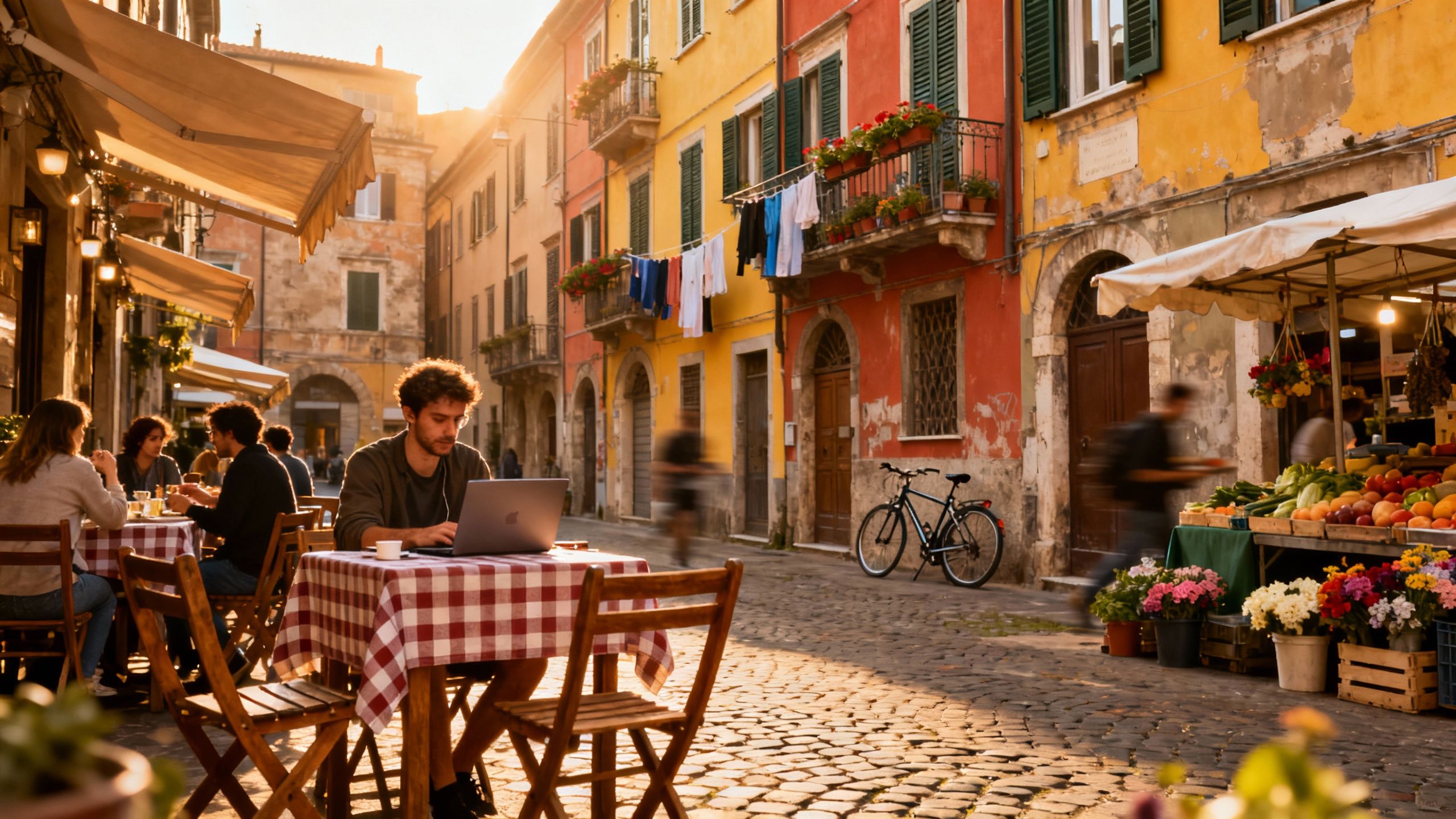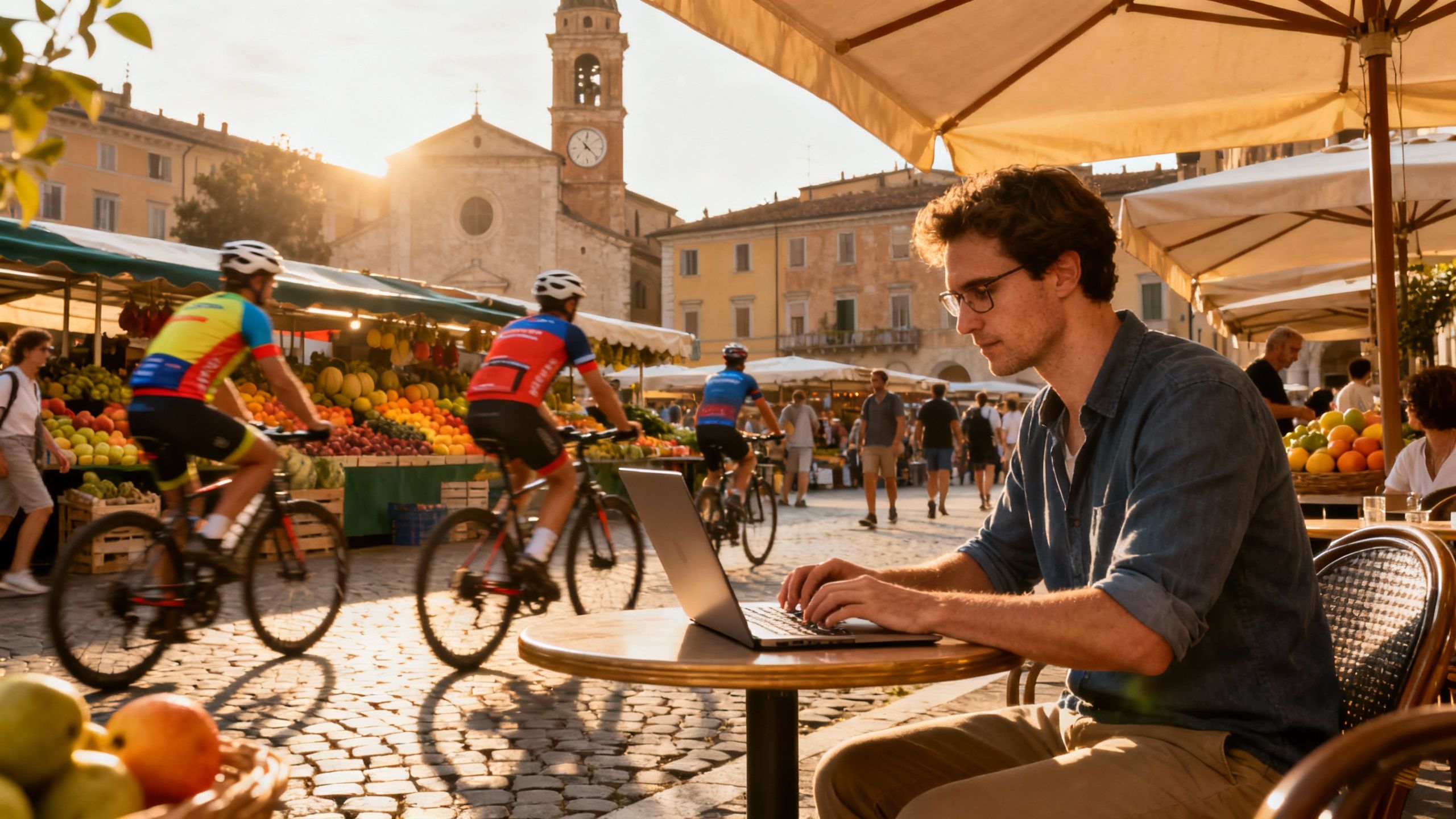How Malta’s Nomad Permit Shapes Where You Buy
Malta blends sun-soaked lifestyle with concrete residency paths like the Nomad Residence Permit — pair local data and a neighbourhood test-stay to buy with confidence.
Imagine sipping an espresso on Triq ir-Repubblika in Valletta, your laptop open, the harbour breeze cutting the midday heat. Life in Malta feels like a compact Mediterranean dream — historic streets, rooftop terraces, and a coffee culture that stretches late into the evening. For modern nomads and international buyers, Malta offers English-language ease, sun-soaked weekends and residency options you can actually plan around. But the real question is how those lifestyle perks change the way you search for, value and buy property here.
Living the Malta lifestyle

Malta is compact in area but abundant in moods. Walk from the baroque lanes of Valletta to the seaside promenade of Sliema in under 30 minutes and you’ll experience café culture, ferry commutes, and that island rhythm where evenings out are as important as mornings. The pace is Mediterranean — social, outdoor and seasonal. Winters are mild and business keeps moving, while summers explode with beach life, festas and open-air concerts that spill into neighbourhood piazzas.
Neighbourhood spotlight: Sliema, St Julian's & Gzira
Sliema and St Julian's are Malta’s modern living rooms: cafes, coworking spaces, seafront walks and a mix of young professionals and families. Gzira, tucked between them and Valletta, feels like a quieter working base with harbour views and short commutes. If you want cafes with reliable Wi‑Fi and evening social life, these are your hotspots — but expect higher prices and denser blocks. For nomads who value community meetups and coworking, this northern corridor often wins.
Food, weekend rituals and hidden pockets
Weekends in Malta mean a market morning in Marsaxlokk, a lunch of lampuki pie, and a swim at Ghadira Bay in Gozo if you’re feeling slow. Local favourites like Pjazza San Ġorġ in Valletta or the Sliema seafront pull residents out of their flats. For buyers, that translates into different priorities: a balcony for long dinners, easy access to ferries if you love Gozo, or a studio near coworking spaces if you prioritise community. Small street-level cafés, laundrettes and the ferry timetables quietly shape daily life here.
- Lifestyle highlights to map when you house-hunt in Malta:
- Sundowner terraces in St Julian’s: evening social life and short cab rides to coworking.
- Valletta’s narrow lanes: perfect for history lovers who want walkable culture and smaller, characterful apartments.
- Gozo weekend escapes: buy with a guest room or rent out easily during high season.
Making the move: practical considerations

That Mediterranean dream sits on a rising market. Malta’s Residential Property Price Index rose year‑on‑year in recent quarters, reflecting demand concentrated in apartments and maisonettes, especially around the northern harbour. Those numbers mean two things for lifestyle buyers: (1) prime walkable spots hold value and sell quickly, and (2) budget buyers trade central convenience for quieter southern villages or Gozo.
Property styles and how you’ll actually live
From converted townhouses in Valletta to modern apartments in Sliema, Malta’s housing stock rewards different lifestyles. If you work from home, prioritise natural light, sound insulation and balconies for outdoor breaks — older stone buildings can be charming but noisy. Newer developments often advertise fibre internet and built-in work nooks; ask for measured internet speeds and check local signal maps before signing anything.
Working with local experts who know the nomad life
Agencies that understand residency paths — like the Nomad Residence Permit — become lifestyle matchmakers. They can combine property searches with visa timing, short-term rental options and health‑insurance checks. Choose a local agent who has placed other nomads and can show proof of fibre availability, neighbours’ profiles and proximity to meetup hubs. That way you don’t just buy a home; you buy into a daily life.
- Checklist: lifestyle + practical steps before you make an offer
- Confirm visa/residency timeline (Nomad permit processing and entry visa requirements).
- Verify measured internet speeds and latency at the exact flat or street address.
- Map coworking, cafes and community events within a 15‑minute commute.
- Ask an agent about seasonal rental demand if you plan to rent out while away.
Insider knowledge: what expats wish they'd known
Expats often romanticise Malta’s tiny scale and forget that island life magnifies both conveniences and inefficiencies. Deliveries can be quick, but peak-season traffic and ferry quirks affect weekend plans. Locals value community ties; joining a language course, a diving club or a regular café meetup will open doors faster than any app. And yes — prices in popular pockets have been rising, so timing and location matter more than you think.
Cultural integration and everyday social life
English is widely spoken, which flattens many barriers, but learning Maltese or basic phrases changes how neighbours receive you. Weekday rhythms center on work and cafes; weekends are for family festas and long lunches. Respect local rhythms — shops close mid‑day in some villages — and you’ll quickly move from tourist to regular.
Longer-term life: how the island changes you
In three years on the island you’ll notice slower grocery catch-ups, stronger friendships and a different relationship with space — terraces and small kitchens become prized. For buyers, that often means prioritising outdoor living and storage. If you want resale flexibility, favour homes near reliable transport links and coworking hubs over very niche rural finds.
- Red flags locals watch for when buying:
- Unclear title history or missing permits — always ask for documentation checked by a lawyer.
- Poorly insulated older stone flats without modern ventilation — cosy but noisy or damp.
- No proof of reliable internet or overloaded local networks in dense blocks.
If you’re dreaming of Malta’s sun, use data and local help to protect that dream. Recent RPPI figures show steady price growth in 2024–2025, so pairing residency timing (like the Nomad Residence Permit) with a focused search will help secure lifestyle wins without overpaying. Work with a local lawyer and agent who understand residency timing, internet infrastructure and seasonal rental markets.
Start small: rent in the neighbourhood you love for three months, test coworking and commute times, then buy with evidence. That’s the best way to fall in love with Malta — slowly, on a street-by-street basis — while making smarter property choices backed by data and local know‑how.
Dutch investment strategist guiding buyers to Greece and Spain; practical financing, tax, and portfolio diversification.


